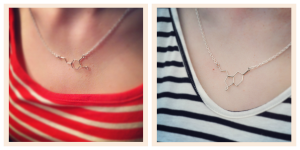Efforts to improve chemotherapy have prodded scientists to get around to uncovering the chemical properties of one of Earth’s most rare elements, astatine. Astatine, which appears as element 85 on the periodic table, was dusted off by an international team of scientists in order to explore whether it could be used in alpha therapy, a type of chemotherapy given to cancer patients. Through laser experiments at CERN, in Geneva, Switzerland, the researchers were recently able to measure a fundamental chemical and physical property of the element, its ionization potential.
After its discovery in 1940, astatine has pretty much filled no purpose in our society. It has not been a popular subject of scientific study save for a 1960s project that studied a 70-nanogram sample of astatine’s excitation characteristics. Judging from the dearth of communication about the element since then, there hasn’t been much rich material to build upon for further studies. It suffices to say that there has been no reason to boast about it even though it was once the Rarest Element in the World. It barely even had any time to revel in this short-lived title; it lost out to berkelium, an element that was discovered just nine years later. Astatine was doomed to fade in history, both in the physical and cultural senses.
What is so interesting about it now is that researchers realize that its radioactive properties could help develop a new type of alpha therapy for chemo patients. Astatine’s half-life, or the time it takes for it to decay to one half of its original amount, is 8.1 hours. Its fast decay time means that the potent radiation can be administered in small doses, rather than in widespread exposures.
The scientists measured the amount of energy that is required to remove one electron from the outermost shell, or the ionization potential, of the astatine atom using laser spectroscopy. By exposing the atom to laser beams of a series of different wavelengths near the point of ionization, they could determine the precise energy level that corresponded to the ionization event.
As another check, the same result was found through a theoretical calculation. The fact that the calculation checks out gives researchers confidence that they can predict the atomic and chemical properties of a closely related atom, the newly-found element 117. They reported their findings on Tuesday in Nature Communications.
 |
| etsy/kipi |
It’s astonishing how many new elements have been discovered in recent years and how passably little is known about the elements that we have already discovered. Even if there were no immediate application for understanding the ionization potential of astatine, such information would seem at home in a heavy book with dusty pages, right next to astatine’s molecular weight and boiling point. The difficulty with astatine is that it’s hard to observe it in nature because it is so unstable. Trying to measure the ionization potential of this capricious element necessitated the technological feat that the research team wrote their paper on.
Moreover, these books of chemical and physical properties must get larger every few years. Two new elements were found last year, and element 117 was found in 2010. Granted, all three of these elements were fabricated in a laboratory and are not naturally occurring, but they deserve page-space next to workhorses hydrogen, oxygen and nitrogen. Perhaps now that experts are more confident than ever in their theoretical calculations, we’ll see ionization potential data on element 117 soon.
Papers cited in this post:
Rothe S., Andreyev A.N., Antalic S., Borschevsky A., Capponi L., Cocolios T.E., De Witte H., Eliav E., Fedorov D.V. & Fedosseev V.N. & (2013). Measurement of the first ionization potential of astatine by laser ionization spectroscopy, Nature Communications, 4 1835. DOI: 10.1038/ncomms2819
Leave a Comment

